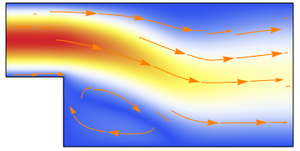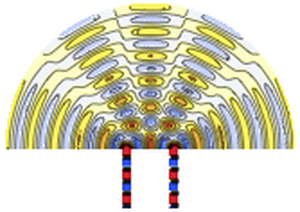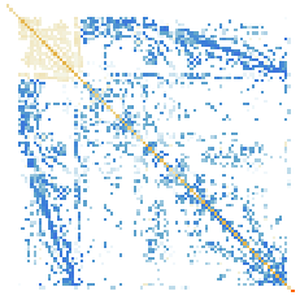Transient Navier–Stokes
Compute the time-dependent flow around a cylinder with the transient Navier–Stokes equation:

Here  is the vector-valued velocity field,
is the vector-valued velocity field,  is the pressure and
is the pressure and  the identity matrix.
the identity matrix.  and
and  are the density and viscosity, respectively.
are the density and viscosity, respectively.
Set up parameters and a region.
Visualize the region and the inflow profile.
Specify the transient viscous Navier–Stokes equation with viscosity  and density
and density  .
.
Specify a function that ramps up the inflow velocity.
Specify an inflow boundary condition on the left.
Specify an outflow boundary condition on the right.
Specify no-slip boundary conditions on the remaining walls.
Replace parameters in the boundary conditions.
Set up initial conditions such that the system is at rest.
Time-integrate the Navier–Stokes equation on a mesh with specified spacing while interpolating the velocities with second order and the pressure with first order.
Compute the vorticity of the flow field.
Set up the color scheme to be used for the visualization.
Visualize the vorticity.
Generate the frames for an animation.
More details about this model can be found in the documentation.


























